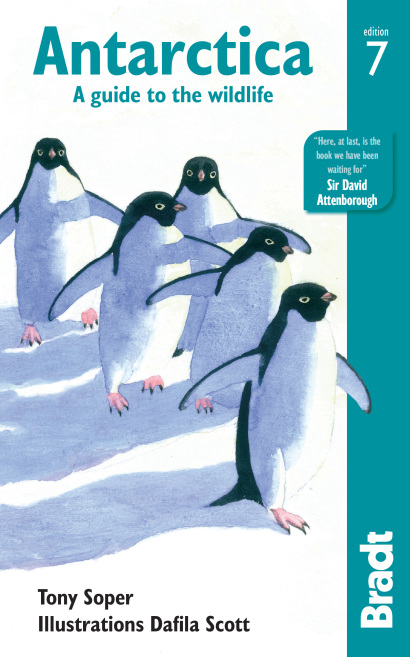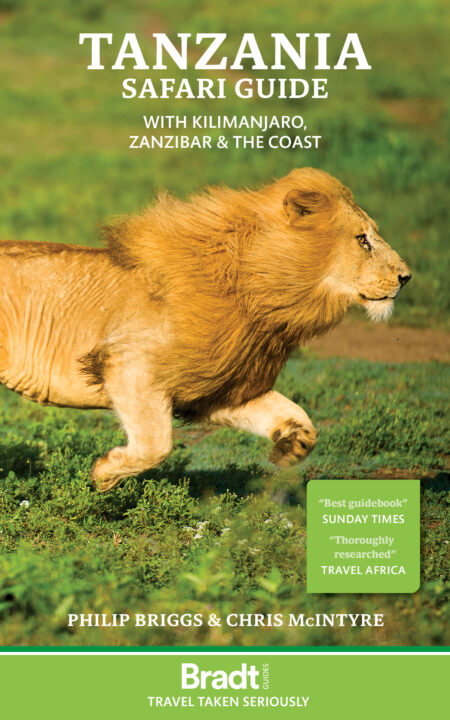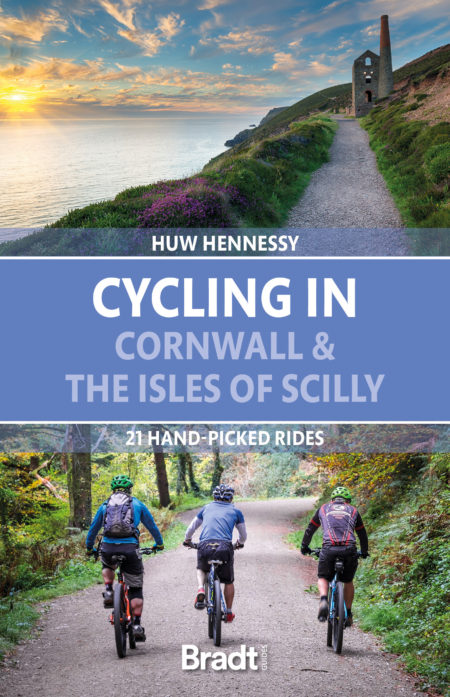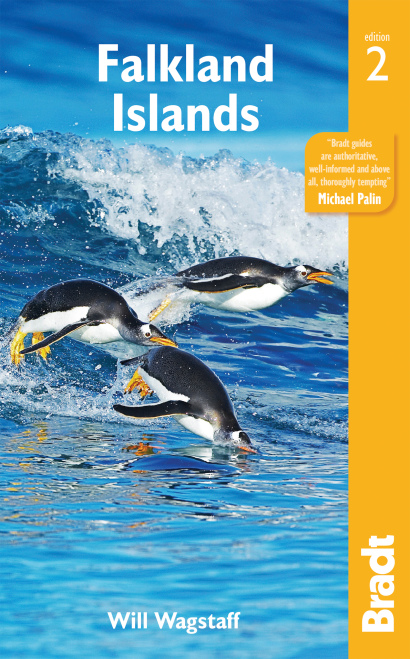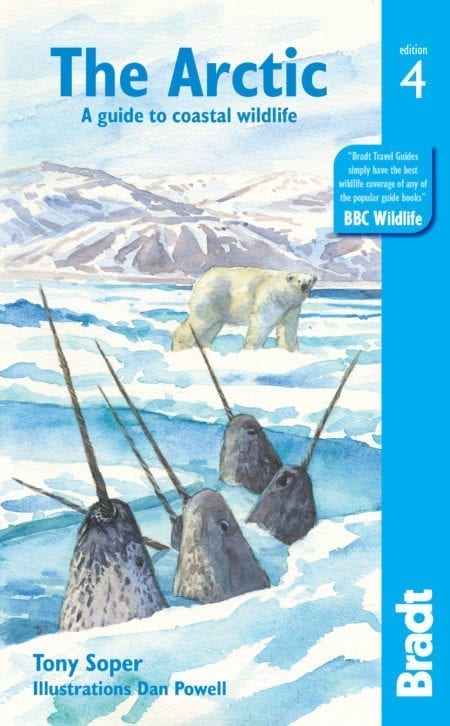Antarctica
A Guide to the Wildlife
by Tony SoperAntarctica Wildlife Guide – Travel information and expert advice on the wildlife of Antarctica featuring species identification and field guides to flora and fauna. Also including detailed illustrations, suggested itineraries and tour operators, glossary of scientific names, penguins, whales, seals, Antarctic exploration history, maps and routes.
Size: 135 X 216 mm
Edition: 7
Number of pages: 160
About this book
Updated throughout, the 7th edition of Bradt’s Antarctica: a Guide to Wildlife is the most practical guide to the flora and fauna available for those ‘going south’. Celebrating the amazing and often unique species of this spectacular environment, the title features chapters on the region’s famous whales and penguins, and also on lesser known species such as skuas and sheathbills, with full coverage of plumage and identification. Each chapter is accompanied by vibrant illustrations from Dafila Scott to help bring species to life. Tony Soper’s immaculate and engaging text remains the indispensible choice for the intrepid wildlife enthusiast.
Antarctica’s wildlife is under threat. The Southern Ocean is warming and the most obvious effect is on the continental ice shelves. Spectacular retreats and monster carvings from the west coast of the peninsula have been seen in recent decades. Less ice means fewer krill, which depend on the ice-edge for the algae which nourish them. In turn, this will impact on seal and whale numbers. In the case of penguins, while kings and macaronis, for instance, are doing well, the magnificently adapted and truly Antarctic species, Adélies and emperors, are in decline. In the case of emperors, maybe by as much as 50%.
Bradt’s Antarctica not only helps you to identify and understand species and habitats, it also explains the issues faced by this extraordinary continent, regarded by many as one of the most precious places on the planet.
Before ordering ebooks from us, please check out our ebook information.
About the Author
Tony Soper was first bowled over by Antarctica when he sailed the furious fifties as lecturer in the pioneer tourist vessel World Discoverer in 1992. Lucky to get the job, his knowledge of southern ocean wildlife would have gone comfortably on a postage stamp. Looking for a pocket guide to the birds to find there was no such thing, he set to and carried a pile of 5×4 cards (this was not only before the internet, it was before decimalisation). On return, he persuaded his chum Hilary Bradt (they sailed the Indian Ocean together) that those filecards needed upgrading to paperback, decorated with superb watercolours by Dafila Scott (who had better Antarctic connections). And he upgraded his ship job to become Expedition Leader for subsequent seasons, sailing in Russian research vessels, designed for work in ice-infested coasts and manned by men with unrivalled experience of ice navigation.
Like the trans-hemisphere Arctic tern, he migrated annually to the deep south after that first baptism, crossing the dreaded Drake Passage many dozens of times to enjoy the endless excitement and pleasures of exploring the spectacular scenery and the world of penguins and great whales. In those early days the reward was to be sailing waters which were poorly-charted but with undiscovered wildlife treasures, finding new routes to remote islands with penguin-rich beaches and those bays and backwaters where stranded icebergs make for wonderful zodiac cruises and chances to find yourself alongside whales and basking seals.
Today, the Antarctic season is home for a visiting flotilla of expedition ships, from small vessels carrying fifty hardy explorers to enormous luxury vessels carrying more than a thousand in search of a polar treat. For the fullest experience, he advises choice of a ship which offers beach landings and zodiac cruises. And be aware that the Expedition Leader will have great influence on the success of your trip. Reading the Bradt guide at least guarantees an introduction to the wonderful wildlife without the disadvantage of crossing the Drake in a westerly storm and five-metre waves.
Dafila Scott is an artist and zoologist, member of the Society of Wildlife Artists and ‘Scott of the Antarctic’s’ grand-daughter.
Reviews
‘Here, at last, is the book we
have been waiting for.’
Sir David Attenborough
‘Recommended reading’
Wanderlust Travel Magazine
Additional Information
Table of ContentsINTRODUCTION
DISCOVERY AND EXPLOITATION
Explorers, Sealers and Whalers
TERRESTRIAL PLANTS AND INSECTS
MARINE INVERTEBRATES
FISH
BIRDS
Penguins
Albatrosses
Petrels and Shearwaters
Cormorants
Sheathbills
Skuas
Gulls
Terns
MAMMALS
Seals
Whales
APPENDICES
South Georgia, Terrestrial and Freshwater Species
The Falkland Islands
Glossary of Snow and Ice
Guidelines for Visitors to the Antarctic
Useful Websites
Further Reading
Author and illustrator acknowledgements
